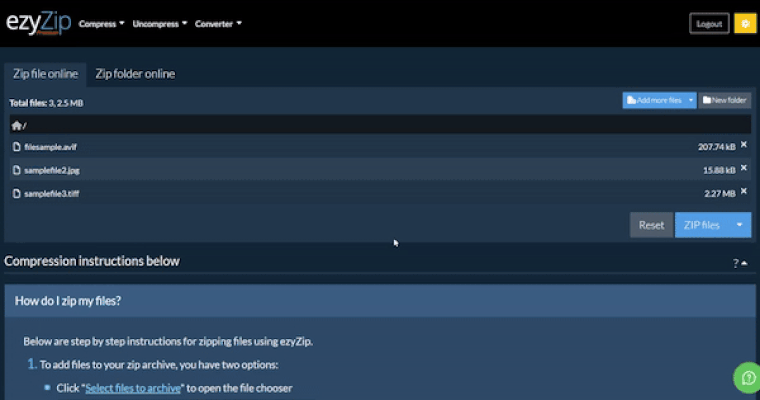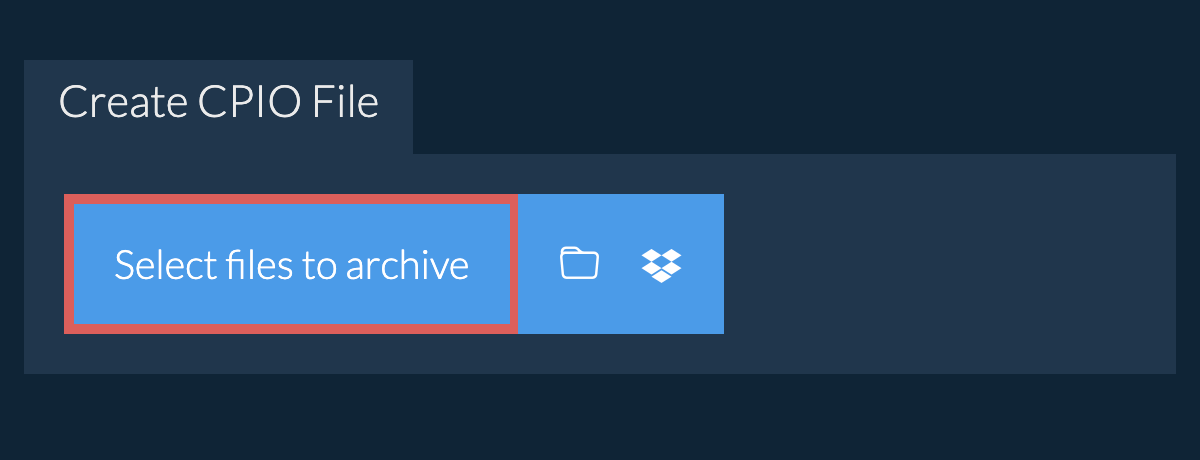Compression instructions below

Go Ad-Free with ezyZip Pro!
Enjoy all your favorite features, like seamless compression, conversion, and easy extraction, without the distraction of ads. Upgrade now for a faster, frustration-free experience!
Sign up!Video Instructions
How do I create cpio file?
- To add files to your cpio archive, you have two options:
- Click "Select files to archive" to open the file chooser

- Drag and drop files and folders directly onto ezyZip
- (Optional) Set the desired compression level by clicking the down arrow next to "Create CPIO File" button.
- Click "Create CPIO File". It will start compressing the files.

- Click "Save CPIO File" to save the archive to selected destination folder.

How do I create cpio archive from a folder?

How do I convert Dropbox files to cpio?
- Click on the Dropbox logo () in the file selector button.

- The Dropbox file chooser will appear. You will need to authorise access to ezyZip the first time.
- Once you have selected the file(s), they will appear in the listing. Follow the instructions above to compress the files.
- To save the resulting CPIO file to Dropbox, click on "Dropbox" dropdown under the "Save CPIO File" button. This will require authorisation the first time you run it.
The file will be stored in /Apps/ezyZip folder.
What operating system and browser does ezyZip support?
We are continuously updating the system, so ensure you are using the latest version of one of the popular browsers or their variants. (e.g. Chrome, Firefox, Safari, Opera).
Please let us know via the feedback form if you have any issues.
What is a cpio file?
A CPIO file (Copy In/Copy Out) is an archive format commonly used in Unix-like operating systems. Originally developed for backup purposes, CPIO creates archives that can store multiple files and directories while preserving file metadata, permissions, and directory structures. Unlike some other formats, CPIO can handle special file types and has the ability to skip corrupted sections during extraction.
CPIO is notably used in Linux systems for creating initial ramdisks (initrd) and RPM package management. Its streaming nature makes it particularly suitable for tape backups and system installations, though its less commonly used than TAR for general-purpose archiving. When creating CPIO archives with ezyZip, date information is not included and empty directories are not added to the resulting archive file.
